The boys were raised in little wooden houses with palm frond roofs, some of them, and floors of dirt or concrete, lit by oil lanterns. The electric lights that glittered on the sequins of nightclub dancers in Havana didn’t reach the poor here, eight miles to the southeast, in the village of San Francisco de Paula.
Old men now, in their eighties, they look back on a time 75 years ago when a legend even while he lived enchanted their childhood; a time when Cuba’s divides of race, class, politics, and privilege dissolved on a baseball diamond. I imagine their games in the last light of day. A low sun hurls shadows from the boys in the outfield and hovers on the horizon for so long it must seem like it will last forever.
“I was ten when I met Hemingway,” Blas Fernandez said.
He had a narrow face that earned him the nickname Cayuco, “deformed head,” when he was a boy. Wrinkles appeared around his eyes when he smiled, which was much of the time, a smile as gentle and sweet as his memories. He wore a black nylon driver’s cap over short silver hair, a striped white short-sleeve shirt and sturdy, dark pants. His voice was like old leather.
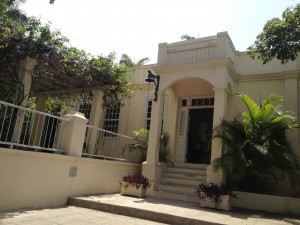 It was 1939 when Ernest Hemingway moved into the house at the top of the hill to start a new life with a new wife, Martha Gellhorn, his third attempt at marriage. It was called the Finca Vigía, Lookout Farm. According to local tales, a Spanish watchtower stood nearby at the turn of the last century. Soldiers kept vigil over Cuba’s folded hills of flamboyan trees and Spanish laurels for signs of mambi, the revolutionaries who challenged Spain’s dominion until 1898, when the Spanish-American War ended Spain’s reign on the island. From the tower they could see all the way to the Morro castle that guarded Havana Harbor.
It was 1939 when Ernest Hemingway moved into the house at the top of the hill to start a new life with a new wife, Martha Gellhorn, his third attempt at marriage. It was called the Finca Vigía, Lookout Farm. According to local tales, a Spanish watchtower stood nearby at the turn of the last century. Soldiers kept vigil over Cuba’s folded hills of flamboyan trees and Spanish laurels for signs of mambi, the revolutionaries who challenged Spain’s dominion until 1898, when the Spanish-American War ended Spain’s reign on the island. From the tower they could see all the way to the Morro castle that guarded Havana Harbor.
A Catalan architect, grieving over the deaths of two of his three children, built a single-story estate with high ceilings and tall windows overlooking his 106-acre farm planted with avocados, mangos, and limes. They strode across a terrace, climbed six steps, crossed an archway, stepped through a wide double door, and entered a tiled living room where afternoon breezes swept away the heat. Spanish troops burned down the house, so the story goes, so he built a second one, in the same spot. His surviving son sold it all to a French investor named Joseph D’Orn Duchamp de Chastaigne. D’Orn sold the house to Ernest Hemingway.
Some of the boys remember they were playing baseball when the author first pulled into town. The Villarreal boys lived there, by the Frenchman’s gate. “We all used to get together there,” Blas said. Forbidden from roughhousing indoors, they played in the dirt street. Sometimes they’d scale the fence and pluck fresh mangos, but they risked the wrath of Don Pedro, the gardener, who chased them away with his machete and his dog.
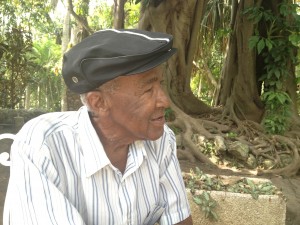 There were six of them with Cayuco that morning: the Villarreal twins René and Luis, their older brother Heliodoro, and three neighborhood boys. Their friend Fico was with his father, as he was most days, at the bakery nearby. They played with a ball of bound rags, their bat a broken broomstick. An injured vulture landed nearby. They stopped their game and were swarming over it when a dark sedan pulled up. In 1939, a car was a more curious arrival than an injured vulture. They stared as a tall yanqui stepped out.
There were six of them with Cayuco that morning: the Villarreal twins René and Luis, their older brother Heliodoro, and three neighborhood boys. Their friend Fico was with his father, as he was most days, at the bakery nearby. They played with a ball of bound rags, their bat a broken broomstick. An injured vulture landed nearby. They stopped their game and were swarming over it when a dark sedan pulled up. In 1939, a car was a more curious arrival than an injured vulture. They stared as a tall yanqui stepped out.
“Muchachos! What are you doing with the bird?” he snapped. That’s how René Villarreal remembers it.
Another man emerged from the car and the two fumbled with the Finca gate. They called over the boys, who easily undid the chain. The tall Mister, as yanqui men were called, rewarded them each with a dollar bill—more than their fathers earned in a day.
“Do other children live nearby?” he asked.
“Sure,” they replied. That’s what Blas Fernandez remembers. They pointed to the small homes down the street where they lived.
“Where do you boys play?” he asked.
They shrugged “Around.”
“Do you play at the Finca?”
“No,” they said and explained the problem of Don Pedro, his machete, and his dog.
Ernest Hemingway smiled. He would soon be moving into the Finca Vigía, he told them, and when he did, the neighborhood kids could play inside the gates and eat all the mangos they could stomach.
“And he did as he promised,” Blas said, his eyes glazing.
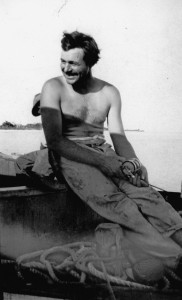 Hemingway was already famous when he came to Cuba. The Sun Also Rises and A Farewell to Arms were beloved. His exploits as a big-game hunter in Africa and deep-sea fisherman in the Gulf were renowned. His home in Key West had already become a tourist destination when he sailed away on his fishing boat the Pilar on Christmas Eve 1938 with a new manuscript in hand, his Spanish Civil War epic For Whom the Bell Tolls. He holed up in a Havana hotel room. When Martha joined him, she insisted on something more civilized. She found an ad for the Finca in a local newspaper, hired workers to fix it up, and convinced Hemingway to rent the place, and later, to buy it.
Hemingway was already famous when he came to Cuba. The Sun Also Rises and A Farewell to Arms were beloved. His exploits as a big-game hunter in Africa and deep-sea fisherman in the Gulf were renowned. His home in Key West had already become a tourist destination when he sailed away on his fishing boat the Pilar on Christmas Eve 1938 with a new manuscript in hand, his Spanish Civil War epic For Whom the Bell Tolls. He holed up in a Havana hotel room. When Martha joined him, she insisted on something more civilized. She found an ad for the Finca in a local newspaper, hired workers to fix it up, and convinced Hemingway to rent the place, and later, to buy it.
When summer arrived, the butler for the newcomer the villagers called “Mister Way”—they couldn’t pronounce Hemingway—came into town to fetch the boys. He left the house and followed the long drive to the gate, turned into the village, gathered the boys from their homes and led them back to the Finca, where they found a baseball diamond marked out in the grass. He handed out catcher’s gloves, stiff and slick, waiting to be worn into the shape of small hands, and new uniforms made by a local seamstress from empty sugar sacks.
Hemingway introduced his sons. “They didn’t speak Spanish well, but kids understand kids,” Blas said. Jack, a teenager too old for kids’ games. Patrick, who showed more interest in books. Gregory, the youngest, about their age.
Blas introduced himself. “My name is Blas, but the kids call me Cayuco.”
Gregory said he had a nickname, too. It was Gigi, pronounced with hard Gs, like “gig.”
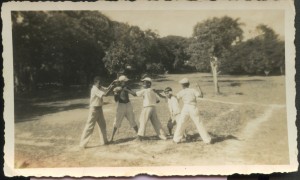 Ernest divided the boys into two teams, mixing bigger and smaller kids, older and younger. He served as pitcher and coach for both teams and declared the boys Las Estrellas de Gigi—Gigi’s All-Stars.
Ernest divided the boys into two teams, mixing bigger and smaller kids, older and younger. He served as pitcher and coach for both teams and declared the boys Las Estrellas de Gigi—Gigi’s All-Stars.
“That day, two things happened that are important to me,” Blas said. “That day I hit a jonron.” A homerun. “I hit the ball and ran all the way. Hemingway was so happy for me, he shook my hand and told me I was a great jonronero.” The kids started calling him Cayuco Jonronero. When he told me, he smiled like it had just happened.
The second important thing also had to do with names. Noticing that Mister Way’s children called him Papa, the boys followed suit. “It seemed that Hemingway liked it,” Blas said. “I am 83 years old and I still call him Papa. People find this strange, but we’ve called him Papa since we were kids, because he was one for us. Hemingway was a very tender, loving person with us.
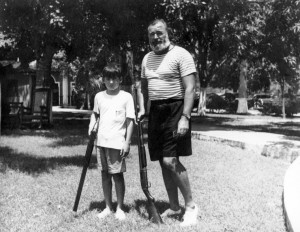 ”Lots of people called Hemingway Papa by then, but in Cuba in the 1940s, where lines of race and class were so sharply divided, it must have seemed very strange for these Afro-Cuban boys to find a father figure in a wealthy white American like Hemingway. To his own sons, Hemingway could be distant, stern, cruel. They spent most of their lives with their mothers, his ex-wives Hadley and Pauline, the first two of his four wives. Time with Papa came in summertime bursts: goggle fishing off his boat the Pilar, deer hunting in Wyoming. To the boys of San Francisco de Paula, Hemingway was more fatherly than a neighbor could be expected to be. When his sons left at summer’s end, the village boys still used the baseball equipment and played on the diamond marked by chalk and barefooted footsteps. Sometimes Hemingway played with them, letting Oscar run the bases for him when he was at bat. In one old photo, Cayuco stands ready as pítcher, wearing baggy britches and a white ball cap, left foot off the ground, right foot sidelong in the dirt. René, the bateador, leans over home plate, pristine in his white uniform. His twin Luis, similarly attired, crouches in the outfield. Papa squats as cátcher, barely visible. Shadows stretch as long as the boys are tall.
”Lots of people called Hemingway Papa by then, but in Cuba in the 1940s, where lines of race and class were so sharply divided, it must have seemed very strange for these Afro-Cuban boys to find a father figure in a wealthy white American like Hemingway. To his own sons, Hemingway could be distant, stern, cruel. They spent most of their lives with their mothers, his ex-wives Hadley and Pauline, the first two of his four wives. Time with Papa came in summertime bursts: goggle fishing off his boat the Pilar, deer hunting in Wyoming. To the boys of San Francisco de Paula, Hemingway was more fatherly than a neighbor could be expected to be. When his sons left at summer’s end, the village boys still used the baseball equipment and played on the diamond marked by chalk and barefooted footsteps. Sometimes Hemingway played with them, letting Oscar run the bases for him when he was at bat. In one old photo, Cayuco stands ready as pítcher, wearing baggy britches and a white ball cap, left foot off the ground, right foot sidelong in the dirt. René, the bateador, leans over home plate, pristine in his white uniform. His twin Luis, similarly attired, crouches in the outfield. Papa squats as cátcher, barely visible. Shadows stretch as long as the boys are tall.
These boys grew up playing hide-and-seek among the Finca’s handmade mahogany furniture, watched over by safari trophies and Modernist paintings by artists they’d never heard of. They packed themselves a dozen at a time into Hemingway’s station wagon bound for his hunting club. The only dark faces there, the boys feasted on Coca-Cola and crackers while wealthy white men shot pigeons. “Nobody would mess with us because we came with Papa,” Blas said.
Beisbol has had a democratic aspect in Cuba ever since Cubans opted for ballgames over bullfights during the island’s fight for independence. Imported by a couple young men who discovered the game while away at college in the States, baseball was new and modern. Bullfights were an Old Country anachronism. At a time when rich and poor, black and white, rarely mixed, they packed grandstands together to watch the game. At the Finca, these boundaries fell even further, even though Hemingway was hardly free of the racism of his day. Letters to friends included references to “niggers.” His generosity wasn’t revolutionary—he was more fatherly lord to the serfs—but it did change these boys’ lives in ways that still raise tears in old men’s eyes. His kindnesses, even simple niceties, were more than poor black poor black Cuban boys had come to expect from life.
“For us, Las Estrellas de Gigi, Hemingway’s greatness is what he did for us,” Blas said.
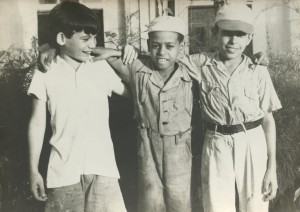 The surviving Estrellas all remember Hemingway this way. When I met with Fico Ramos later, his eyes, too, filled with tears. “Hemingway was like a father to me,” he said.
The surviving Estrellas all remember Hemingway this way. When I met with Fico Ramos later, his eyes, too, filled with tears. “Hemingway was like a father to me,” he said.
Fico was Gigi’s best friend in the village. A photo shows the two with the youngest Villarreal boy, Popito, in front of the Finca, arms over each other’s shoulders. Fico is dressed for baseball. Popito wears a stained shirt buttoned to trousers that droop at the waist. The two smile at the camera. Gigi, looking like Christopher Robin in shirtsleeves bleached and pressed, smiles widely at them.
Today, Fico is tall, lean, and muscular, with the complexion ofcafé con leche. Gray hair piles in thick curls on his head. He has deep wrinkles and young eyes. On the day I met with him, he wore heavy leather shoes, creased khaki pants, and a checked shirt buttoned halfway up. He lives in a plain wooden house with a tile floor and posters of the Last Supper and Cuba’s patron saint, La Virgen del Cobre, on the walls. It sits at the top of a hill surrounded by palms, hibiscus, and analmendro tree sprouting orchids: a modest Finca Vigía not far from Hemingway’s.
On the day Mister Way arrived, Fico watched the car pull into town. “I saw him from far away,” he said, but the two would become very close. Because Fico spent most days with his father at the bakery near the Finca’s gate, Hemingway hired him as gatekeeper. “Open the gate. Close the gate,” he said. “As the years passed, I grew up and moved upward.” Fico started running errands for the Hemingways, swept the terrace, helped out in the kitchen. When the chef died, Ernest’s wife Mary, his fourth and final wife, asked Fico to take over.
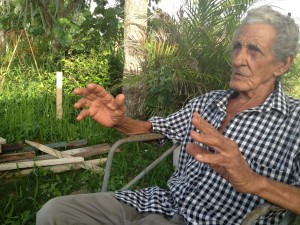 What Fico remembers best, though, is the time his sister died. It was 1946. Luis Villarreal raced to the Finca with the news: Fire had destroyed the Ramos home. Fico’s sister was burned. The girl spent eighteen days in the hospital. “Then she died,” he said.
What Fico remembers best, though, is the time his sister died. It was 1946. Luis Villarreal raced to the Finca with the news: Fire had destroyed the Ramos home. Fico’s sister was burned. The girl spent eighteen days in the hospital. “Then she died,” he said.
It was in the telling of this story, arms waving, that Fico’s eyes filled with tears.
“Hemingway sent flowers, a big floral arrangement, and he came to the funeral with Miss Mary. In 1946, he was a famous writer, a big position, and me, a poor pedestrian. He came from the Finca to my house. It was just a mud road, no pavement or anything, and he came to greet my mother and father. That is the best memory I have. I tell this story so you know how Hemingway was. His feelings were beautiful. If he were any other person, he would not have visited my mother or sent flowers or anything like that. This is not some simple story I made up. I was there. I saw him. I lived this story. I lived this. I lived this.”
It was not the first time Hemingway had responded to a death in the village. One afternoon, when Las Estrellas de Gigi had gathered for a baseball game at the Finca, an oxcart, not so different from the carts still trundling through rural Cuba, rattled along the lane. The boys begged the old driver for a ride to the gate. René, Luis, and Heliodoro hopped aboard. Fico and Popito leapt onto the crossbar. As the oxen ambled onward, the cart lurched into a ditch. Popito, just eight years old, fine-boned, dark-skinned, with tender brown eyes, tumbled to the ground. The oxcart crushed him. He screamed.
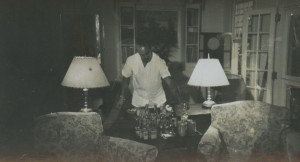 Hemingway had a special fondness for Popito. He nicknamed him El Secretario because he ran errands at the Finca. Papa ordered his driver to rush the boy in the station wagon to the nearest clinic, then the hospital in Havana. Popito couldn’t be saved.
Hemingway had a special fondness for Popito. He nicknamed him El Secretario because he ran errands at the Finca. Papa ordered his driver to rush the boy in the station wagon to the nearest clinic, then the hospital in Havana. Popito couldn’t be saved.
Flower arrangements appeared at the Villarreal home with no senders’ names attached. Hemingway quietly paid for the funeral. Several weeks later, he showed up at their home and offered to bring one of the boys to work for him. Eleven-year-old René went, changing his life forever.
“Anytime someone was sick and needed medicine or when someone died, we started collecting money from the neighbors, and we went to see Papa,” René’s twin Luis told me. “Papa was very generous. He would make a check for twenty or thirty pesos. At that time, with twenty pesos we could buy the funeral casket, flowers, chocolate, cigars, and have money left over.”
 I met with Luis and his brother Oscar in a simple whitewashed home behind a low concrete fence and a spreading mango tree. Lace doilies covered the living room sofa and chairs. Ceramic figurines—a Virgin Mary, a swan vase—lined the shelves.
I met with Luis and his brother Oscar in a simple whitewashed home behind a low concrete fence and a spreading mango tree. Lace doilies covered the living room sofa and chairs. Ceramic figurines—a Virgin Mary, a swan vase—lined the shelves.
Blind and wheelchair bound, Luis was still sharp. Oscar was sharper still. He had a lean face with white hair combed backward and thick brown-framed glasses perched on his nose. He wore a yellow Polo shirt, gray pleated pants, and brown dress shoes, and he held his head with long fingers. “I usually tear up when I think about Hemingway,” he said. “We were very poor. The middle class people who had radio and electricity would close their doors so we couldn’t hear their soap operas. It was the famous writer, a wealthy man, who gave us a hand, who opened his door to us.”
Direct and opinionated, Oscar didn’t seem like a man who teared up easily. He was part of Cuba’s old guard, the stalwarts beholden to Castro, regardless of whatever condemnation the world heaped upon him. For people like Oscar, Castro was forever the bold leader of a revolution that removed the cruel dictator Fulgencio Batista from power. The United States views Castro as a tyrant and his government as a sponsor of terrorism. Many young Cubans mock him as the man who kept their country poor and isolated long after the Berlin Wall crumbled. Their grandparents, however, old enough to remember the days of Batista, are his most faithful supporters. They praise him for easing the lives of the poor and bringing education and healthcare to people who did not have it before.
“For me, Fidel—the comandante en jefe—and Hemingway are two extraordinary men. Wonderful. Noble. Beyond what we understand as regular men,” Oscar said.
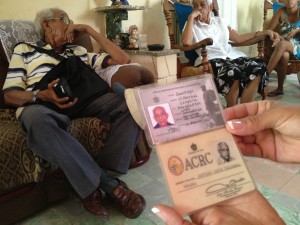 The old men spoke a heavily accented Spanish, in which consonants dissolved into vowels and S’s disappeared altogether. I struggled to follow their words. When I lost track of the conversation, I imagined these old men as boys, marking time by innings, dividing space by chalk lines, playing baseball in the glow before darkness falls—gradually, then suddenly, as Hemingway once wrote about bankruptcy.
The old men spoke a heavily accented Spanish, in which consonants dissolved into vowels and S’s disappeared altogether. I struggled to follow their words. When I lost track of the conversation, I imagined these old men as boys, marking time by innings, dividing space by chalk lines, playing baseball in the glow before darkness falls—gradually, then suddenly, as Hemingway once wrote about bankruptcy.
By 1957, bombs were exploding on the streets of San Francisco de Paula. Young men joined rebel brigades. Militias hunted them, tortured them. The boys who played for Las Estrellas de Gigi, nearly Castro’s age, were approaching their thirties as the fighting peaked.
Fico had married and left the Finca to work construction. He was more interested in raising a family than in an insurrection. “I never looked for problems,” he said. “I liked the revolution. I still like the revolution. But well, I wasn’t into that.”
Luis Villarreal sold figurines to raise money for the rebels in the hills. An artist, Oscar painted revolutionary graffiti in Havana and later, became a party leader, traveling the world—to India, Canada, Costa Rica—to tout Cuban-style socialism. He handed me laminated ID cards marked with Cuba’s seal that named him a “revolutionary combatant,” a position of honor.
René Villarreal became the Hemingways’ butler, serving martinis to the Duke of Windsor and catching peeks at Ava Gardner skinny-dipping in the pool.
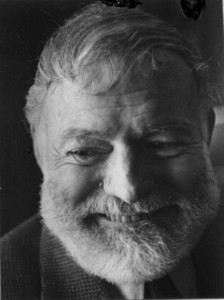 Ernest left Cuba in 1960, believing he would return. He had lived there for more than two decades, longer than he had lived anywhere in a life of travel. It was where he could write well, “as well there in those cool early mornings” as anywhere in the world, he once wrote. He left for New York, then Spain, then the new home he had bought in Ketchum, Idaho. While he was gone, the gulf between his birth country and his adopted country widened. An internal conflict raged in the hemispheres of his mind. On a summer morning in 1961, 19 days shy of turning 62, he stood in the vestibule of his home in the Sawtooths and blasted apart his brain cavity with both barrels.
Ernest left Cuba in 1960, believing he would return. He had lived there for more than two decades, longer than he had lived anywhere in a life of travel. It was where he could write well, “as well there in those cool early mornings” as anywhere in the world, he once wrote. He left for New York, then Spain, then the new home he had bought in Ketchum, Idaho. While he was gone, the gulf between his birth country and his adopted country widened. An internal conflict raged in the hemispheres of his mind. On a summer morning in 1961, 19 days shy of turning 62, he stood in the vestibule of his home in the Sawtooths and blasted apart his brain cavity with both barrels.
Mary Hemingway cleared out the china, the paintings, and her husband’s unfinished manuscripts and gave the Finca to the Cuban government. Fidel converted it into a museum, and it remains today much as Hemingway left it, the author’s World War II correspondent’s jacket in the closet, the cocktail table set with Wild Turkey and Bacardi. A sign at the entrance marks the field where Las Estrellas de Gigi used to play.
Castro named René director of the new museum. Unlike his brother Oscar, faithful to the end, René came to oppose the dictator. He endured two years slashing sugarcane in a labor camp to earn the privilege to leave the island. With the aid of Hemingway’s widow Mary, he fled to Spain, then to the United States, and settled among Cuban émigrés in New Jersey. With his son Raúl, an artist like Oscar, he penned a memoir,Hemingway’s Cuban Son, that evokes his life with the man he still calls Papa.
It can be hard, at least for an American in the 21st century, to understand why baseball games and funeral arrangements should mean so much, and that old men should remember them with such fondness when so many other memories must have faded. It must be due in part to Hemingway himself. If Hemingway wasn’t the larger-than-life myth he painted for himself, he was as close to it as a mortal could be, and his lust for living was infectious to almost anyone who pulled marlin out of the sea beside him or chased with him across Spain from bullfight to bullfight.
In their world, though, grownups didn’t play ball with little boys, masters didn’t mingle with servants, rich didn’t fraternize with poor. For these boys, a sip of Coca-Cola was a luxury. Being treated to as much as they could stomach by a famous author, revered around the world, was a fantasy.
It all must have seemed especially magical in the slanting light of childhood when Las Estrellas de Gigi shined. Before revolution and madness there were young boys and baseball. I imagine that first game. Papa pitches. Cayuco bats. The ball connects like a rifle shot and soars. The boy in bare feet flies around the bases. First. Second. Third. Home.


